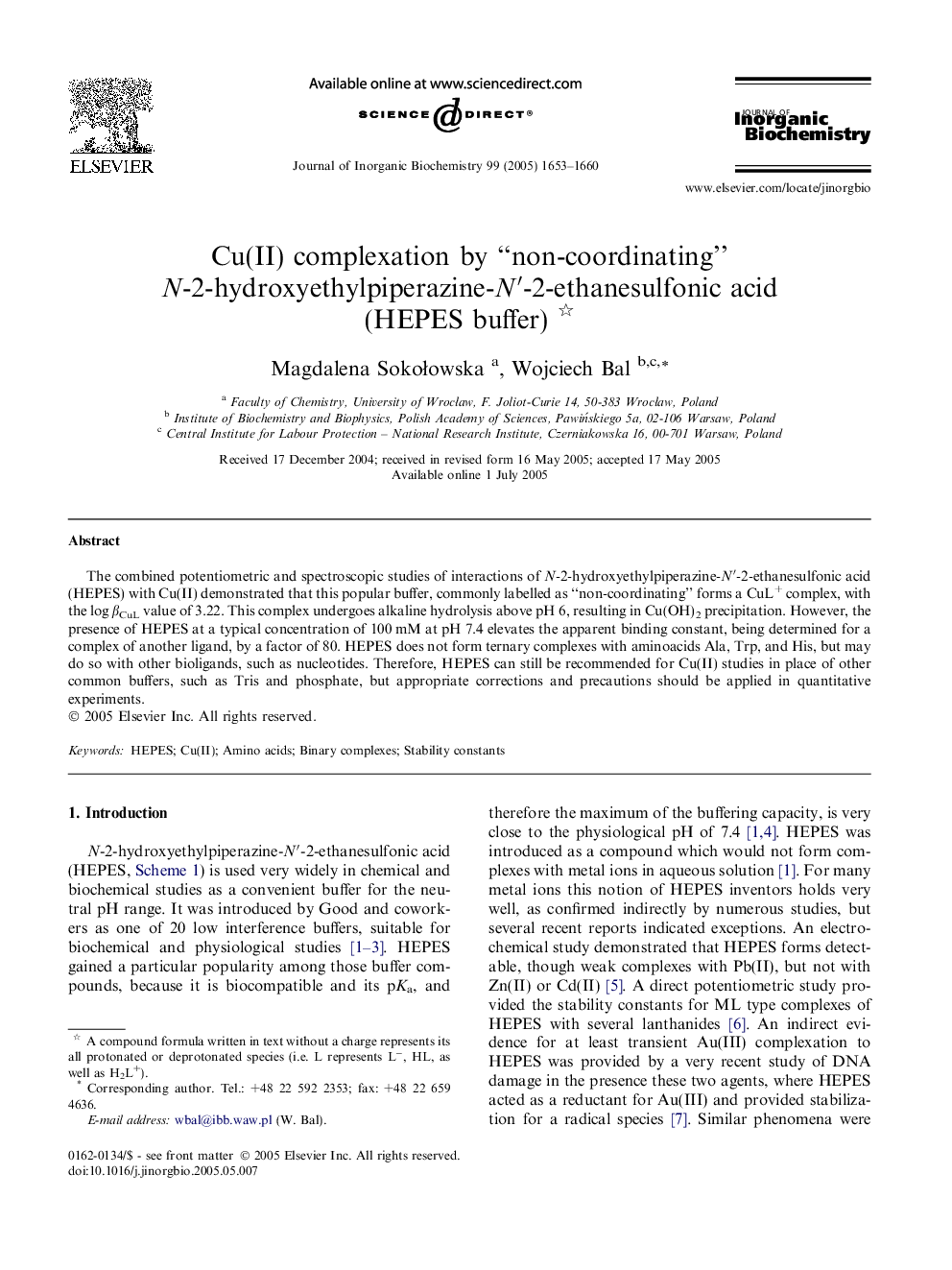| Article ID | Journal | Published Year | Pages | File Type |
|---|---|---|---|---|
| 10574291 | Journal of Inorganic Biochemistry | 2005 | 8 Pages |
Abstract
The combined potentiometric and spectroscopic studies of interactions of N-2-hydroxyethylpiperazine-Nâ²-2-ethanesulfonic acid (HEPES) with Cu(II) demonstrated that this popular buffer, commonly labelled as “non-coordinating” forms a CuL+ complex, with the log βCuL value of 3.22. This complex undergoes alkaline hydrolysis above pH 6, resulting in Cu(OH)2 precipitation. However, the presence of HEPES at a typical concentration of 100 mM at pH 7.4 elevates the apparent binding constant, being determined for a complex of another ligand, by a factor of 80. HEPES does not form ternary complexes with aminoacids Ala, Trp, and His, but may do so with other bioligands, such as nucleotides. Therefore, HEPES can still be recommended for Cu(II) studies in place of other common buffers, such as Tris and phosphate, but appropriate corrections and precautions should be applied in quantitative experiments.
Related Topics
Physical Sciences and Engineering
Chemistry
Inorganic Chemistry
Authors
Magdalena SokoÅowska, Wojciech Bal,
